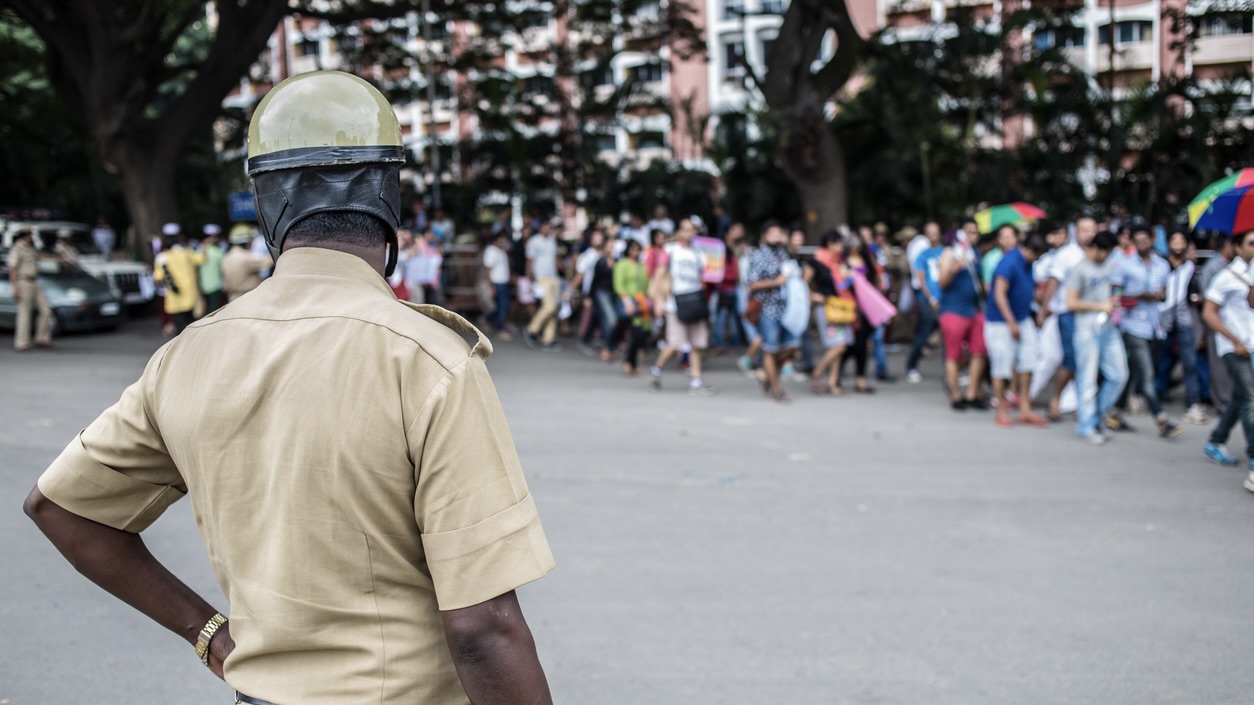Issued by the Office of the Director General and Inspector General of Police, it outlines a comprehensive framework for planning, organising, and policing large-scale gatherings, events, and protests.
Published Jul 01, 2025 | 7:23 PM ⚊ Updated Jul 01, 2025 | 7:23 PM

The SOP provides clear instructions on how officers are to respond during emergencies, and how any use of force or arrest is to be legally documented and justified.
Synopsis: Following a deadly Chinnaswamy stadium stampede in Bengaluru last month that claimed 11 lives, the Karnataka police have introduced a new SOP to regulate crowd management at large public events and protests. The SOP mandates comprehensive pre-event planning, strict protocols for emergency response and more.
In the wake of a tragic stampede near Bengaluru’s Chinnaswamy Cricket Stadium that claimed 11 lives during the Royal Challengers Bangalore (RCB) IPL victory celebrations, the Karnataka government has issued a new Standard Operating Procedure (SOP) for managing crowds at large-scale public events.
Issued by the Office of the Director General and Inspector General of Police on 26 June to the offices of Commissioners of Police, Inspectors General of Police, and Superintendents of Police in the state, it outlines a comprehensive framework for planning, organising, and policing large-scale gatherings, events, and protests.
Below, South First breaks down the key components of the SOP that aim to ensure not only the smooth functioning of any large-scale gathering, but also that event planners and police personnel are prepared to deal with contingencies and emergencies – all while ensuring that individual rights are not tampered with.
The first and most critical part of the SOP deals with early-stage preparations before any large gathering is allowed to take place.
Recognising that modern events often emerge spontaneously – sometimes fuelled by social media – the SOP emphasises the importance of adaptive planning and early risk mitigation.
Police and planners are directed to conduct behavioural and spatial simulations to study how crowds are likely to move, especially in areas known for bottlenecks or poor visibility.
Appropriate tools are to be used to identify high-risk zones, including narrow exits, confined holding spaces, or overlapping entry routes.
Venues intended for large gatherings must undergo thorough safety audits. These include checks for:
Importantly, venues that fail to meet safety standards must not be approved for high-footfall events.
Furthermore, Police officers are tasked with gathering a wide range of details from organisers, including:
Once the event begins, the SOP outlines how to manage large, emotional crowds and details how crowd flow and access should be controlled.
This includes everything from deploying trained personnel to using technology-enabled screening – all aimed at maintaining order and safety without causing unnecessary confrontation.
Officers trained in crowd control, emergency communication, and basic medical response are to be stationed at:
Every officer must have a clearly assigned zone and responsibility, and deployment is to be mapped in advance in a written operational plan approved by the Commissioner or Superintendent of Police.
Furthermore, the SOP mandates clear conduct rules for police:
Crowds must be funnelled through:
The SOP also calls for queue management systems that include:
Furthermore, a robust and centralised public address system must be installed, capable of:
The SOP provides clear instructions on how officers are to respond during emergencies, and how any use of force or arrest is to be legally documented and justified.
For situations like fires, stampedes, or extreme weather events, the SOP mandates:
If a situation demands that a crowd be dispersed, officers must:
Use of force is permitted only as a last resort, and even then, it must be measured, proportionate, and legally justified.
Arrests are to be carried out only by designated teams, with procedures in place to:
Post-event, the police must compile:
(Edited by Dese Gowda)
